Rane FPM 42 Handleiding
Rane
Mengpaneel
FPM 42
Bekijk gratis de handleiding van Rane FPM 42 (4 pagina’s), behorend tot de categorie Mengpaneel. Deze gids werd als nuttig beoordeeld door 9 mensen en kreeg gemiddeld 3.9 sterren uit 5 reviews. Heb je een vraag over Rane FPM 42 of wil je andere gebruikers van dit product iets vragen? Stel een vraag
Pagina 1/4

OPERATING / SERVICE MANUAL
FPM42
Set the GAIN switches on the front of the module so the desired level is obtainable without il-
luminating the red OL (overload) LEDs on the channels. Set the A and B LEVEL controls on
each input for the desired level. Set the AUX level control as needed.
The MASTER A/B output level controls affect only the signal level at the direct outputs of the
unit. They have no affect on the main output added to the BUS OUT.
NEVER CONNECT ANYTHING EXCEPT AN APPROVED RANE POWER SUPPLY TO
THE RED THING THAT LOOKS LIKE A TELEPHONE JACK ON THE REAR OF THE
UNIT. This is an AC input and requires special attention if you do not have a power supply EX-
ACTLY like the one originally packed with your unit. See the full explanation of the power supply
requirements elsewhere in this manual.
QUICK START
This section is for those ready to just do it. It familiarizes you enough with the FPM 42 to allow
operation without wading through the rest of the text. Please read at least this section to ensure
reasonable operation of the unit.
Begin with the inputs. They are connected to the 3-pin (XLR) jacks on the rear. Follow the
standard convention of pin 2 hot, pin 3 not and do it.
Set the internal PRE/POST Aux assign switches as necessary. The A and B MASTER OUT-
PUTS may be used balanced or unbalanced. If AUX outputs are needed change the internal
jumper blocks as necessary, or take them from the BUS OUT connector.
Connect the Flex bus cables to the appropriate source for the FLEX BUS IN and the next unit
for FLEX BUS OUT.
SYSTEM CONNECTION
When connecting the FPM 42 to other components in your system for the first time, LEAVE
THE POWER SUPPLY FOR LAST. This gives you a chance to make mistakes and correct
them without damage to your fragile speakers, ears and nerves.
INPUTS. The four channel inputs on the FPM 42 are active balanced. Use only shielded cable
for inputs and outputs. This wire should always be two-conductor plus shield, even for un-
balanced operation. As with all Rane products, pin 2 is used for “hot” or “+” signal polarity, pin
3 is “return” or “–” and pin 1 is signal ground. For unbalanced inputs, drive pin 2 hot and pin 1
signal ground. It is not necessary to short pin 3 to ground. (It will not hurt anything either.) If the
input is coming from another piece of equipment in the signal path, connect the shield only at the
receiving end to help prevent ground induced hum. If a microphone is being connected to the
unit, the shield may be connected to the case of the mic as well as to the ground terminal on the
unit. (Phantom power applications require this.)
OUTPUTS. The FPM 42’s Master A and B outputs are balanced as shipped and connected to
the two l/4" TRS jacks. The Aux A/B outputs appear only on the BUS OUT jacks. You may
reprogram this arrangement by changing internal jumpers. The new configuration puts an un-
balanced Master A/B signal on one of the l/4" outputs, and an unbalanced Aux A/B signal on the
other.
FLEX BUS IN. The 7-pin DIN bus connectors are used primarily with other Flex modules.
These are not MIDI connectors. Use only the supplied DIN cable. If for some reason there is not
a cable in the FPM 42 box, please contact Rane for a replacement. If you are in a bind, a 5-pin
DIN may be used instead of a 7-pin. The two outside pins (6 & 7) are spares on the FPM 42 and
have been included for possible future compatibility reasons. This input is to be used when com-
bining the FPM 42 with the bus outputs of other modules such as another FPM 42, an FMI 14,
etc. Bringing in bus signals allows the FPM 42’s mix to add to the bus and be routed on to the
next unit, and so on.
FLEX BUS OUT. The FLEX BUS OUT of the FPM 42 connects to other Flex mixer modules to
complete a system. The receiving device may be any Flex module with a FLEX BUS IN. See the
Flex Users Guide for additional details.

FRONT PANEL DESCRIPTION
1. INPUT LEVEL CONTROLS. These concentric level controls set the level of each
input to be routed to the Master A/B outputs and buses. The inner knob controls the level
to be sent to A, the outer knob controls the signal applied to B. Rotating the knobs
together creates a “pan centered” effect. Leaving one off and increasing the other emu-
lates a full pan to one side.
2. GAIN SELECT SWITCH. These switches set the maximum gain of the input stages in
each of the four input sections. The 60 dB mode is normally used for most microphones.
The 40 dB mode would be used for high level microphones or very weak line level inputs.
The 20 dB mode is suitable for line level inputs.
3. AUX SEND LEVEL CONTROL. There is only one of these for both the AUX A and
B sends. It controls the amount of channel input fed equally to the optional A and B Aux
outputs. This control’s range is from Off to +10 dB. The Aux source is selected from
either pre- or post fade via internally located switches.
4. OVERLOAD INDICATOR This red LED comes on anytime the input amplifier ex-
ceeds a level of 4 dB below clipping.
5. MASTER A & B LEVEL CONTROLS. These concentric knobs set the signal output
level of the Master A output (inner knob) and the Master B output (outer knob). Their
range is from Off to +10 dB.
6. POWER INDICATOR. Indicates power, as indicated.

REAR PANEL DESCRIPTION
1. CHANNEL INPUT CONNECTORS. Use these 3-pin connectors for either microphone
or line level inputs. Connect balanced sources to pin 2 (“+”), pin 3 (“–”) and pin 1 (GND)
terminals. Unbalanced inputs connect only to pin 2 (“+”) and pin 1 (GND). When an un-
balanced input is used, pin 3 (“–”) may be left open or shorted to GND.
2. MASTER A/B OUTPUTS. If balanced operation is your choice, use both jacks as indi-
cated by the graphics printed to the right (or top) of the jacks. One is MASTER A output,
and the other is MASTER B output.
3. AUX A/B OUTPUTS. These are optional unbalanced outputs programmed by changing
jumpers inside the unit. Refer to the graphics found to the left (or bottom) of the jacks, and
to the silkscreened word “AUX” found on the printed circuit board. Locate three (3) jumper
blocks. Lift the jumper header up and reposition one pin over and slide back down (covering
the word “AUX”).
4. FLEX BUS IN CONNECTOR This input accepts bus information from other FLEX
mixer modules, such as an FM1 14, FMM 42 or another FPM 42. This input adds to the pro-
gram material connected to the FPM 42. The combined results appear at the FLEX BUS
OUT jack, as well as the terminal strip outputs.
5. FLEX BUS OUT CONNECTOR This seven-pin DIN connector provides output to other
mixer modules, such as another FPM 42, an FMI 14 or an FMM 42. Signals present here in-
clude the AUX of both this FPM 42 as well as any AUX sends generated by other FLEX
mixer modules connected to the FLEX BUS IN above. The Master A and B signals are also
available, which are the sum of this module and any other modules connected to the bus
input.
6. AUX PRE/POST ASSIGN SWITCHES. Slide switches located inside the FPM 42. Used
to select Aux source to be PRE- or POST- input LEVEL A/B controls. Shipped in the PRE
positions.
7. POWER INPUT CONNECTOR USE ONLY A MODEL RS 1, FRS 8, OR OTHER
REMOTE AC POWER SUPPLY APPROVED BY RANE. The FPM 42 is supplied with a
remote power supply suitable for connection to this input jack. Consult the factory for re-
placement or substitution.
8. CHASSIS GROUND POINT. A 6-32 threaded hole, used for chassis grounding pur-
poses.
9. GROUND LIFT SWITCH. On this unit, the Ground Lift switch is located along the bottom edge (vertical mounting), or
along the right-hand side (horizontal mounting, from the front). Since the switch’s location prevents easy use once installed,
it is suggested you decide which position is required, and set it before installation. The LIFT position is when the switch is
slid to the rear of the unit.
10. PHANTOM POWER SWITCH & LIGHT. On this unit, the Phantom Power switch is located along the top edge (verti-
cal mounting), or along the left-hand side (horizontal mounting, from the front). Since the switch’s location prevents easy
use once installed, it is suggested you decide if phantom power is required, and set it before installation. The ON position
lights the LED when the switch is positioned to the rear of the unit.
TOP-REAR COVER REMOVAL PROCEDURE:
To gain access to the PRE/POST switches and/or output jumpers, remove the top/rear cover as follows:
1. Using a #2 phillips screwdriver, remove the (5) screws securing the top/rear cover to the chassis.
2. Slide the top/rear cover to the rear and off of the chassis.
3. Replace the top/rear cover by reversing the above procedure.
Product specificaties
| Merk: | Rane |
| Categorie: | Mengpaneel |
| Model: | FPM 42 |
Heb je hulp nodig?
Als je hulp nodig hebt met Rane FPM 42 stel dan hieronder een vraag en andere gebruikers zullen je antwoorden
Handleiding Mengpaneel Rane

18 Juni 2025
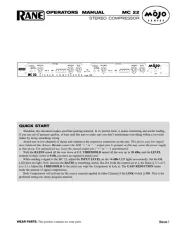
18 Juni 2025
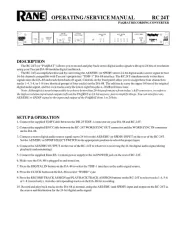
18 Juni 2025
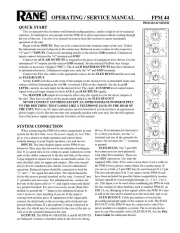
17 Juni 2025
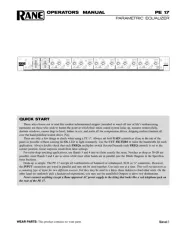
17 Juni 2025
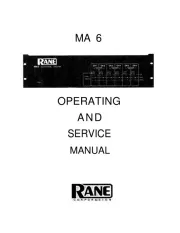
17 Juni 2025
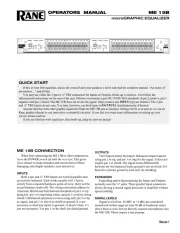
17 Juni 2025
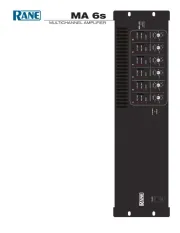
17 Juni 2025
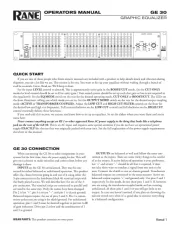
17 Juni 2025
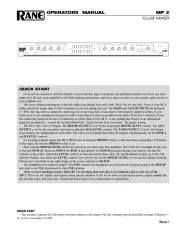
17 Juni 2025
Handleiding Mengpaneel
- Alfatron
- Karma
- Swissonic
- JB Systems
- Midas
- Atlas Sound
- DBX
- API Audio
- Allen-Heath
- Bogen
- Monoprice
- Crown
- Akai
- Auna
- Pyle
Nieuwste handleidingen voor Mengpaneel
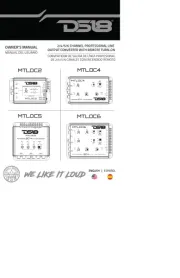
8 September 2025
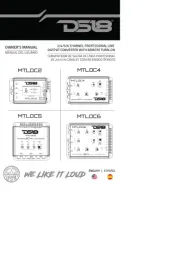
8 September 2025
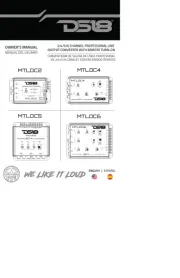
8 September 2025
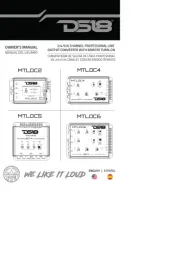
8 September 2025

12 Augustus 2025
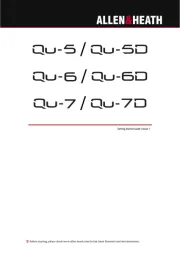
12 Augustus 2025
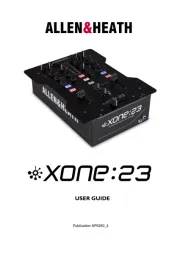
11 Augustus 2025
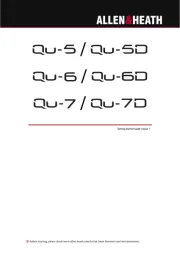
11 Augustus 2025
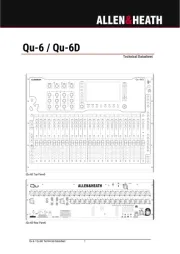
11 Augustus 2025
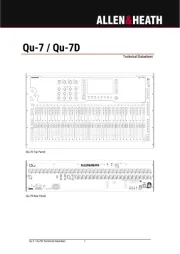
11 Augustus 2025